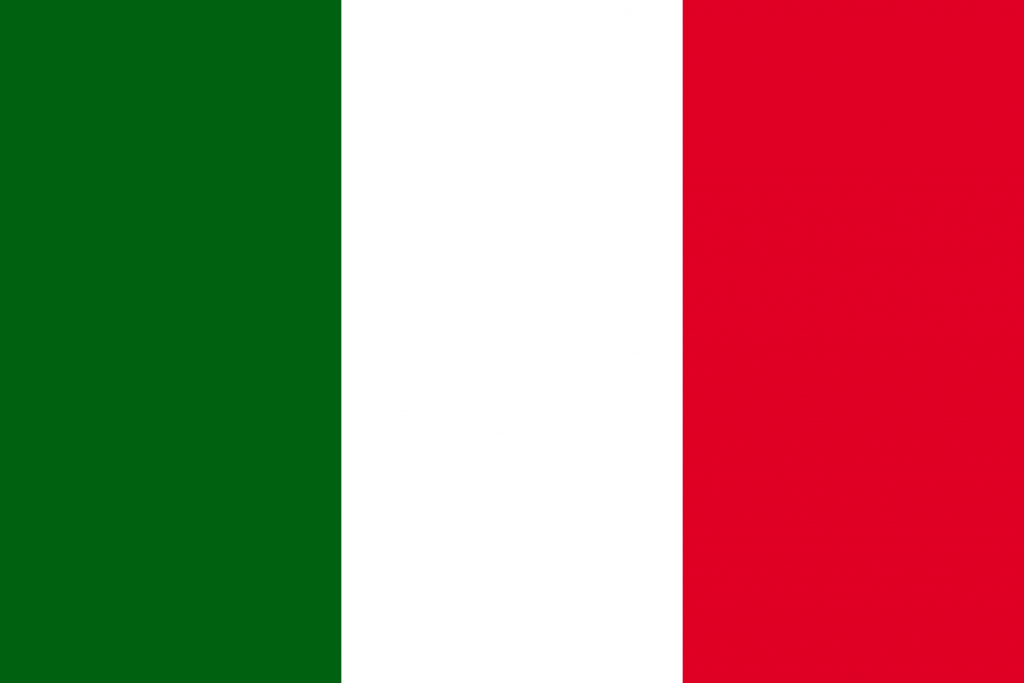ABOUT ITALY
Italy (Italia), officially the Italian Republic or Republic of Italy, is a country that consists of a peninsula delimited by the Alps and several islands surrounding it. Italy is located in the middle of the Mediterranean Sea, in Southern Europe, it is also considered part of Western Europe. A Unitary parliamentary republic with Rome as its capital and largest city, the country covers a total area of 301,230 km2 (116,310 sq mi) and shares land borders with France, Switzerland, Austria, Slovenia, as well as the enclaved microstates of Vatican City and San Marino. Italy has a territorial exclave in Switzerland, Campione. With over 60 million inhabitants, Italy is the third-most populous member state of the European Union.
HISTORY
Due to its central geographic location in Southern Europe and the Mediterranean, Italy has historically been home to myriad peoples and cultures.
Since classical antiquity, ancient Etruscans, various Italic peoples (such as the Latins, Samnites, and Umbri), Celts, Magna Graecia colonists, and other ancient peoples have inhabited the Italian Peninsula. In antiquity, Italy was the homeland of the Romans and the metropole of the Roman Empire’s provinces. Rome was founded as a Kingdom in 753 BC and became a republic in 509 BC. The Roman Republic then unified Italy at the expense of the Etruscans, Celts, and Greek colonists of the peninsula. The Roman Empire later dominated Western Europe and the Mediterranean for many centuries, making immeasurable contributions to the development of Western philosophy, science and art. After the fall of Rome in AD 476, Italy was fragmented in numerous city-states and regional polities.
Despite seeing famous personalities from its territory and closely related ones (such as Dante Alighieri, Leonardo da Vinci, Michelangelo, Niccolò Machiavelli, Galileo Galilei, and Napoleon Bonaparte) rise, it remained politically divided to a large extent. Thereafter, the Italian Renaissance spread to the rest of Europe, bringing a renewed interest in humanism, science, exploration, and art with the start of the modern era. Italian explorers (including Marco Polo, Christopher Columbus, and Amerigo Vespucci) discovered new routes to the Far East and the New World, helping to usher in the Age of Discovery.
By the mid-19th century (1861), the Italian unification by Giuseppe Garibaldi, backed by the Kingdom of Sardinia, led to the establishment of an Italian nation-state.
Following the WW2, the 1946 Italian constitutional referendum abolished the monarchy and became a republic, reinstated democracy, enjoyed an economic miracle, and founded the European Union (Treaty of Rome), NATO, and the Group of Six (later G7 and G20). It remains a strong economic, cultural, military, and political factor in the 21st century.
ECONOMY
Italy has an advanced economy. The country is the ninth-largest by nominal GDP (third in the European Union), the eighth-largest by national wealth and the third-largest by central bank gold reserve. It ranks highly in life expectancy, quality of life, healthcare, and education. The country is a great power, and it has a significant role in regional and global economic, military, cultural, and diplomatic affairs. Italy is a founding and leading member of the European Union and a member of numerous international institutions, including the United Nations, NATO, the OECD, the Organization for Security and Co-operation in Europe, the World Trade Organization, the Group of Seven, the G20, the Council of Europe, the Schengen Area, and many more. The source of many inventions and discoveries, the country has long been a global centre of art, music, literature, philosophy, science and technology, and fashion and has greatly influenced and contributed to diverse fields including cinema, cuisine, sports, jurisprudence, banking, and business. As a reflection of its cultural wealth, Italy has the world’s largest number of World Heritage Sites and is the fifth-most visited country.
Taken and adapted from
https://en.wikipedia.org/wiki/Italy
https://en.wikipedia.org/wiki/History_of_Italy
(30 th August 2022)

CULTURE
Italy is considered one of the birthplaces of western civilization and a cultural superpower. Divided by politics and geography for centuries until its eventual unification in 1861, Italy’s culture has been shaped by a multitude of regional customs and local centres of power and patronage. Italy has had a central role in Western culture for centuries and is still recognised for its cultural traditions and artists. During the Middle Ages and the Renaissance, a number of courts competed to attract architects, artists and scholars, thus producing a legacy of monuments, paintings, music and literature. Despite the political and social isolation of these courts, Italy has made a substantial contribution to the cultural and historical heritage of Europe.
Italy has rich collections of art, culture and literature from many periods. with an estimated 100,000 monuments of any sort (museums, palaces, buildings, statues, churches, art galleries, villas, fountains, historic houses and archaeological remains), and according to some estimates the nation is home to half the world’s art treasures.
TOURISM
People have visited Italy for centuries, yet the first to visit the peninsula for touristic reasons were aristocrats during the Grand Tour, beginning in the 17th century, and flourishing in the 18th and the 19th century. This was a period in which European aristocrats, many of whom were British, visited parts of Europe, with Italy as a key destination. For Italy, this was in order to study ancient architecture, local culture and to admire the natural beauties.
Nowadays Italy is the fifth most visited country in international tourism, with a total of 52.3 million international arrivals in 2016. Factors of tourist interest in Italy are mainly culture, cuisine, history, fashion, architecture, art, religious sites and routes, naturalistic beauties, nightlife, underwater sites and spas.
Winter and summer tourism are present in many locations in the Alps and the Apennines, while seaside tourism is widespread in coastal locations on the Mediterranean Sea. Italy is the leading cruise tourism destination in the Mediterranean Sea.
The most visited regions of Italy, measured by nights spent in tourist accommodation establishments, are Veneto, Tuscany, Lombardy, Emilia-Romagna and Lazio. Rome is the 3rd most visited city in Europe and the 12th in the world, Milan is the 27th worldwide and Venice and Florence are also among the world’s top 100 destinations.
Italy is also the country with the highest number of UNESCO World Heritage Sites in the world. Out of Italy’s 58 heritage sites, 53 are cultural and 5 are natural.
